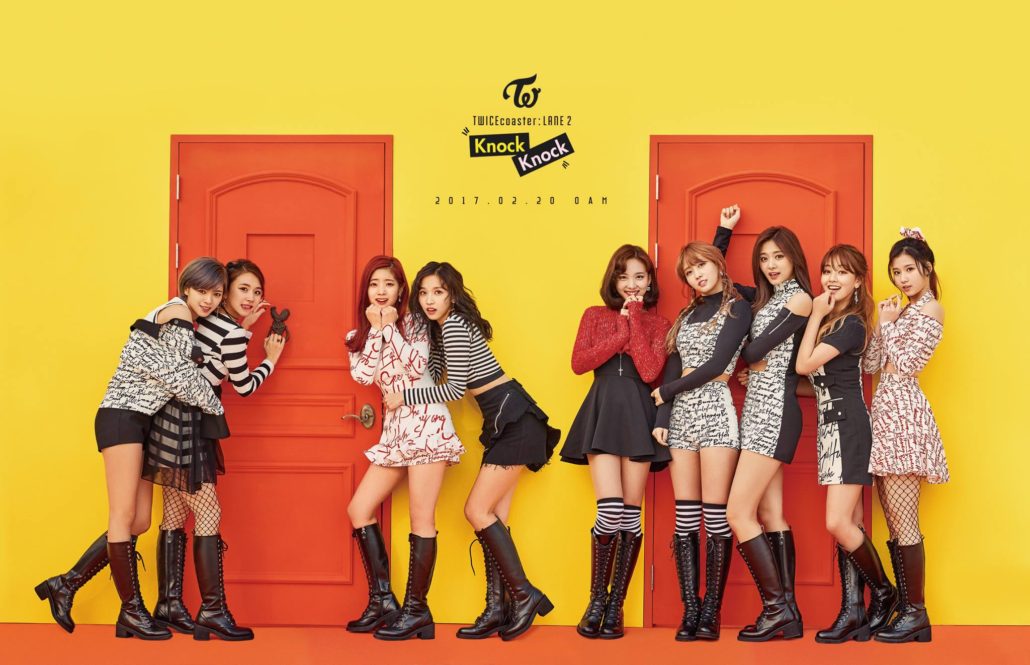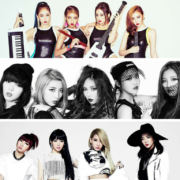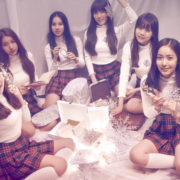The sonic identity of K-pop girl groups: intro
This is the first part of a series in which we’ll discuss the changes in the music of K-pop girl groups throughout the last decade and what these changes say about the environment within which they thrive.
A common notion about Seoul and South Korea is that everything changes very fast. That’s not surprising for a country that turned a weak economy in less than 30 years into a great one, producing high quality education, technology, and entertainment; K-pop unarguably is one of the country’s biggest exports today. However, global attention attention towards South Korea has increased over the past few months exponentially, both due to President Park Geun Hye’s impeachment and the risks of potential nuclear conflicts involving North Korea. But while Korea and most of the world keep an eye on the political turmoil, the promotion of K-pop abroad isn’t showing any sign of slowing down.
For a country that has always been relatively closed off to the rest of the world, Korea seems to be starting to take more seriously the idea of exploring other countries besides China and Japan to promote their cultural and entertainment exports. Female vocalists Hyuna, CL, and Hyolyn had American tours within the last year and a half; BTS’ Wings tour wasn’t only restricted to the US, but also had a Latin American leg; SHINee held their first solo concerts in Canada and the US; rookie group K.A.R.D. will tour in the US and Brazil in the upcoming months; Hyolyn just signed to Spinnin Records, and Rap Monster recently dropped a collaboration with American rapper Wale. K-pop is indeed going head-on.
With so many changes going on, it undoubtedly affects how K-pop sounds as of late. But firstly, a question that intrigues many researchers and music critics: What is K-pop even supposed to sound like?
The K-pop Sound
Even if we claim a certain song sounds or doesn’t sound like K-pop, when it comes to a specific sound, there really is no definite concept of what the K-pop style is. Other than the fact that is largely sung in Korean and the instrumentals are mostly electronic (and even this might have exceptions), there is not a specific sound that can be considered K-pop. It can be anything: electropop, reggae, hip-hop… As a matter of fact, even the fact that it mixes lots of styles has become a very singular thing about K-pop. For example, Twice’s “Cheer Up” mixes electropop and drum’n’bass with touches of dubstep, and even Brazilian tecnobrega.
From a song structure point of view, K-pop is described by songwriters and critics as a style that pretty much has no rules. If Girls Generation’s “I Got a Boy” (considered the Korean “Bohemian Rhapsody”) doesn’t crack your head hard enough, a few moments of active listening to some K-pop songs will have you finding the most diverse song structures. Raps can come in any part of the song. Verse and pre-chorus might have so many variations that you’ll only know what they are when you finally get to the chorus.
Also on KultScene: The K-Pop Phoenix: The New Generation of Girl Groups
As for the melodies and lyrics, the more “full” the lines seem, the better. The pause between lines are often really small; moments where you hear no one talking or singing are very rare in many songs. Harmonies are also something that differentiates K-pop, since there is no specific commitment to stick to a harmonic field during the entire song. As a matter of fact, having a major change in the pre-chorus or chorus might even be a winning thing.
As you might have noticed, listening to a K-pop song is pretty much like a rollercoaster experience: it’s intense, it’s loud, it has up and downs, and you’ll only know it’s over once you’re suddenly assaulted with silence. One expression to describe K-pop would be: too much information. That’s pretty obvious if you judge K-pop by watching the music videos (that’s how many K-pop fans got into this world), since they’re so full of visuals, colours, and energetic dancing. The instrumentals are earworms as well, but you’ll never really understand how obsessed with overage K-pop is until you fully analyze the way songs are made.
However, it hasn’t always been that way. Before the Hallyu fever, and even in its beginning, K-pop songs tended to be more easy listenable (compared to what they are today) while preserving very peculiar attributes, like melodies that resembled to Korean trot music, as we hear on the chorus of songs like Brown Eyed Girl’s “Love.” The structures and harmonies of the songs were simpler, rarely escaping from the verse-chorus-verse-chorus-bridge-chorus formula, and sticking to the same chord progression through the whole song, like we hear on Wonder Girls’ “Irony” or “Tell Me.” Put these against the amount of melodic and harmonic changes heard in a contemporary song like Oh My Girl’s “Coloring Book,” which also has more beats per minute and higher notes than the previous songs, and you’ll surely spot how K-pop has changed in the last decade or so.
Take, for example, the case of the iconic group T-ara. Taking a general listen at their discography, there is a sense of homogeneity and consistent audible identity in their work, especially their biggest hits, which combined American pop trends with other elements that resembled traditional Asian roots.
The unmistakable I–V–vi–IV chord progression and its variations appeared often, such as we hear, for example, in “Why Are You Being Like This” and “Roly Poly”, which chord progressions are the same you hear on Lady GaGa’s “Poker Face” and Jennifer Lopez’ “On The Floor,” two huge American pop hits contemporary of T-ara’s.
As for the singing, as the ladies blended their voices in a homogeneous and almost linear way, with little variations in the notes, it reinforced the feeling of unity and cohesion in the group. Homogeneity, harmony and unity are very strong values in Korea, and this is frequently observed in K-pop through lots of aspects, such as the strictly synchronized choreographies, and of course, the vocals.
On the other hand, for songs with a more melancholic mood, like “Time to Love” and “Day by Day,” the cultural roots appeared through melodies that had what researchers describe as “ppong.” This a peculiar melodic trait that recalls a bit of europop — like you hear in the choruses of songs like Modern Talking’s “You’re My Heart, You’re My Soul” or Alphaville’s “Sounds Like a Melody.” But also, it echoes the sadness found in Japanese school songs, which in its turn resembles the Japanese colonialism of Korea, according to Michael Fuhr in the book Globalization and Popular Music in South Korea: Sounding Out K-Pop.
Also on KultScene: T-ara & the China Influence
This Japanese sound also highly influenced trot music, Korea’s oldest popular music genre. Said trait can be also heard in T-ara’s “Number Nine,” which is the epitome of blending modernity and tradition, with the girls singing a dramatic melody over EDM beats and with a chord progression that smartly combines tension and relief in the pre-chorus and chorus but stays neutral at the raps and breaks.
Contemporary K-pop girl groups’ songs rarely follow the same patterns. However, at that time, it was more than enough to win the hearts of the listeners. As the formula got worn out, and K-pop simultaneously reached larger audiences to the point of having lots of new acts fighting for the attention of the public, there was the need to reinvent their sound.
K-pop girl group music has been through more substantial changes in the last years than the music of their male counterparts, and these changes offer interesting insights on the shifts happened in global culture and society as well. K-pop did not cease to be a creative combination of tradition and modernity; however, these two factors are currently arranged through different elements in a way that says a lot about what’s going on in the world. In the next article, we will discuss the song traits of the new generation of K-pop girl groups.
What’s your favorite K-pop girl group song of yesteryear? Let us know your thoughts in the comment section below and be sure to subscribe to the site and follow us on Facebook, Twitter, Instagram, and Tumblr to keep up with all of our posts.








